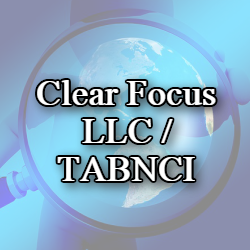Developing The Next Generation Of Leaders
One of the most important roles of senior executives is to develop the company’s future leadership. The groups of leaders that can help take the company to the next level.
Even with the current economy, there is a surge of “baby boomers” retiring and it is resulting in a shortage of leaders. This shortage of leadership comes at a time of rapid change. With globalization, the volatile economy, technology changes, and the increased demands of stakeholders, leadership is vital to not only succeed but also, in some cases, just to survive.
Most often it is less expensive to reach within the company’s workforce for this future leadership than it is to hire from the outside. Developing the leadership skills necessary for leading your company into the future needs to be a part of the company culture.
In house ongoing training programs to develop these skills for your high potential employees should include; assessments, communication training, leadership skills development programs, mentoring, management training, coaching, and goal setting.
Assessments: Use assessments and profiles to identify behaviors, motivators, competencies, emotional intelligences, and acumen. Once identified via assessments, we can better understand the how, why, will, and potential of your employees. Assessments are great tools for selection, retention, development, and putting people in the correct positions within your company.
Communication training: Open communication helps create trust and allows everyone to know what needs to be done, where the company is going, what part they play in the company’s success, and to eliminate any hidden agendas. DISC assessment training is a powerful communication tool that will open the door to effective communication.
Leadership development skills: Identifying the current skills of each person, their strengths & weaknesses, and creating a multi session program to develop and enhance the needed skills and then aligning with the company’s mission, goals, and direction.
Mentoring: A mentor is more than an advisor. A mentor will get you up to speed faster and more efficiently than you can by yourself or through trial and error. A mentor will help you understand how the company works and provide you with wisdom, knowledge, support, respect, skills, and coaching. Your mentoring program should be between a high performing veteran and high-potential leader.
Coaching: Similar to mentoring as to offer guidance & advice. A coach will help to keep you on track with a specific goal or desired result. A coach will help you identify personal & professional strengths & areas for improvement. Your coach will challenge the status quo and help you find answers to facilitate growth and to discover possible new ways of doing things. The most effective coaching is performed by an outside professional who is highly trained in the art of coaching and can help the future leader meet specific goals in a specific period while aligning with the company’s vision & values.
Management training: Prepare managers on how to develop skills and style to be more effective in building and directing their subordinates to higher levels of performance within a focused work environment. This important role often goes untrained yet it is vital to inspire, motivate, and help your team thrive within the company.
Goal setting: Teaching future leaders the art of goal setting and goal achievement is paramount. Specific, Measureable, Attainable, Realistic, and Time-targeted (S.M.A.R.T.) goals. By making sure each goal meets these criteria, you provide a clear expectation of progress and performance. Having participants involved in the goal setting process will increase commitment of the expected outcome and help them understand how the goals align with the overall company’s goals.
Having a formalized leadership development program in place can help in the retention of top talent as well as attract top talent to your company. Giving you the edge over your competition.
If you have any questions about this article, or about how we can help in creating a highly engaged workforce, contact us today!
Gary Brunson
gary@myclearfocus.com
Debra Rider
debra@myclearfocus.com
574.361.2674
Sustainable Growth & Profit Consultant, Coach, Mentor and Counselor/Therapist for Business Owners and Professional.

